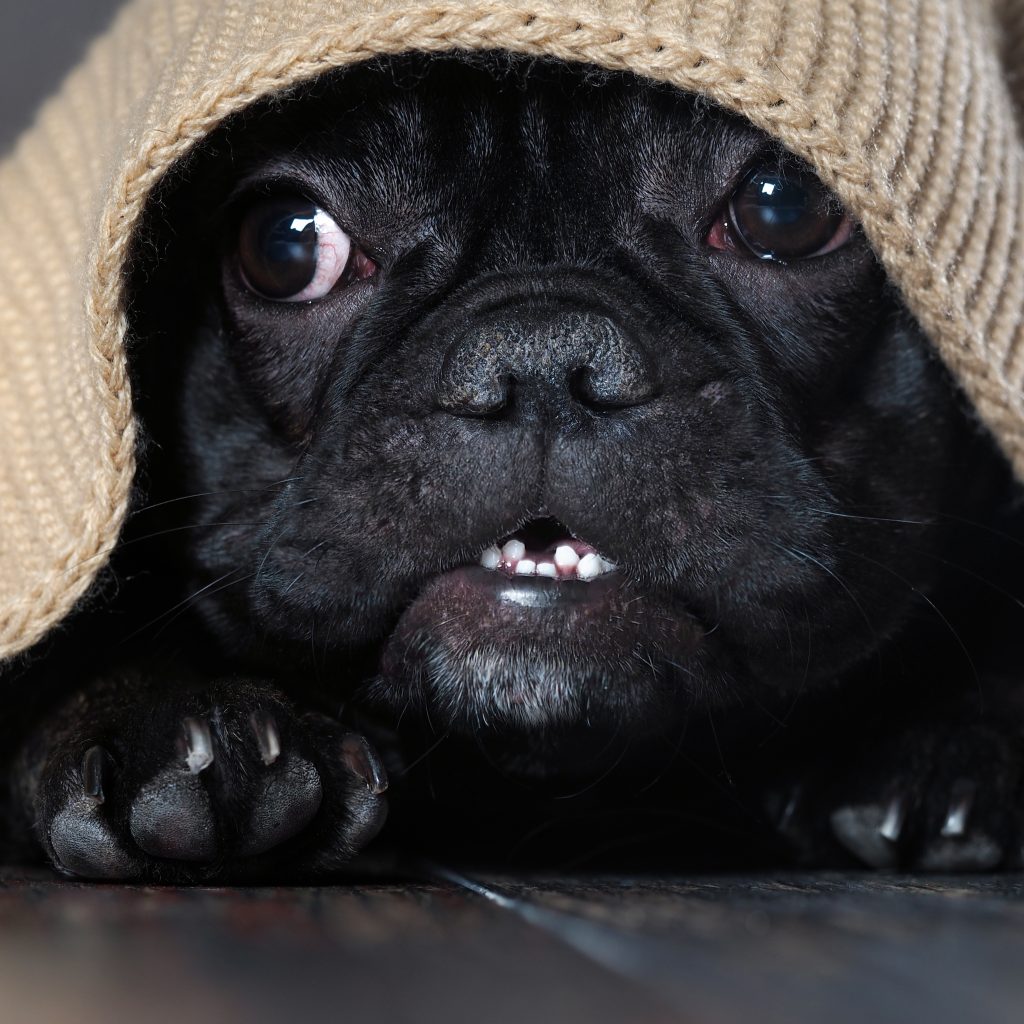If possible, plan your absences from home to be short. The idea is to come home before your dog starts experiencing separation anxiety.
As mentioned earlier, start with being out-of-sight while in the home. Wouldn’t it be nice actually to go to the bathroom by yourself? Haha! Gradually increase your time when your pup is on the other side of the door.
Grab your keys, coat, or whatever you normally do when you leave the house. Do an out-of-sight exercise. Go into your bedroom and shut the door. Come out just before you think your dog will start to experience separation anxiety.
Do not stay in the bedroom so long that he starts experiencing separation anxiety.
Next, exit a door that you don’t usually leave from.
If you always use the front door when you leave, have your dog stay on his pillow or blanket and go out the backdoor. Again, come back into the house before his separation anxiety has set in.
Practice this throughout your day with him. These practices are known to help with separation anxiety in dogs.
Increase the time and be sure to come back in before he begins to feel separation anxiety. Sometimes give him a stuffed food toy just before you leave to distract him. On these occasions, you will be able to be “gone” longer.
Do not practice these sessions too close together. Be certain your dog is completely relaxed each time you leave. Always be quiet when you leave – no big goodbyes. In fact, it would be best to go without saying anything.
A tricky part of this exercise is being able to judge the length of time you can be gone. Again, you want to return before he feels distressed due to separation anxiety.
Only you know how your dog reacts. Separation in dogs is different for all of our pooches.
Try to do this correctly. You do not want to come back in when your dog is experiencing separation anxiety.
This will teach him that you come back when he feels this way.
If you detect stress, you should decrease the length of your departure times again. Continue to add time, but at a slower rate. Separation anxiety in dogs takes time as your dog learns you will return after you leave.
Work up to 40 minutes of being gone without your dog experiencing separation anxiety. Work up to this slowly over a few weeks. You want to increase the time by a few seconds each time. Once your dog can be alone for 40 minutes, increase the time by 5 minutes. Later he can learn to tolerate adding 15 minutes at a time.
Once he is alone for two hours, he can probably handle 4 hours. Once he can handle 4 hours at a time, work up to a full eight hours.
But you might be wondering what you are supposed to do with your dog before he is fully trained. You need to go to work and the grocery store. He will feel separation anxiety at this time. If you can leave him with a family member, friend, or doggy daycare while you are gone, this is a great solution. That is, in least until he gets over his separation anxiety.
Leaving your pooch at a doggy daycare or with a friend might not be an option for you and your dog. Just continue to train, knowing it may take a little longer. That’s because your pup is experiencing separation anxiety when you’re away from home.

